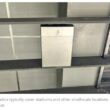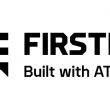THE POWER OF POWER
In most areas, wireless communications involve a series of tradeoffs. Frequency, modulation scheme, physical-layer technology and other factors influence network design, which often results in a compromise that balances the pros and cons of these considerations.
But two areas of wireless communications offer little room for compromise.
First, there must be available spectrum to transmit and receive signals. The importance of spectrum has always been a hot topic in the U.S. wireless arena — public safety organizations use tremendous political capital and technical resources in the name of securing additional channels, and commercial operators have demonstrated a willingness to invest billions of dollars to purchase spectrum at government auctions before spending a dime on their networks.
While spectrum always is top of mind in the wireless sector, the second area — adequate power — often is overlooked because of the availability of the U.S. power grid and a plethora of battery technologies.
But there is no compromise regarding power, on both ends of the wireless link. With power, networks costing millions — even billions — to deploy and maintain deliver the miracle of wireless communications to devices of varying costs and functionality. Without it, the networks represent little more than expensive Erector Sets, and the coveted devices are just paperweights.
Never was this reality more evident than in the aftermath of Hurricane Katrina, when the usually dependable power grid was not available in many cases. Flying debris that punctured a backup power generator at a key site brought the New Orleans’ public safety communications network to its knees for days. Meanwhile, throughout the Gulf Coast, first responders struggled to keep their portable handsets charged.
INFRASTRUCTURE ISSUES
As a result, commercial and government operators have reassessed their contingencies to determine whether they are prepared to operate in environments that don’t offer the comfort of a working electrical grid. While public safety long has prepared for such circumstances, the commercial wireless industry typically has much less stringent standards for backup power.
The reason is simple: A commercial carrier’s goal is to make money. Significant backup power techniques can be expensive. Such costs for items that do not generate revenue typically hurt the carrier’s bottom line and are not a priority.
However, with the attempt to establish a public/private partnership for a public safety data network in the 700 MHz band, the power reliability of a commercial carrier could soon become an important factor for the first responder community. And the ability to generate the economic resources needed for a commercial entity to provide public safety-grade backup power is challenged by the realities of broadband wireless technologies, said Harlin McEwen, chairman of the Public Safety Spectrum Trust (PSST).
“In traditional land mobile public safety [systems], we’ve always had a small number of sites — high-level sites and high-power sites,” McEwen said. “Providing them with the kind of power we need to sustain their operations for long periods is quite different than [in commercial networks], where you have many, many low-power cells.
“You’ve got so many that you’re talking about a whole different ballgame when you’re talking about sustaining power for every one of those. You may not need to have sustainable power at every cell; you may need to have it at key ones.”
Indeed, wireless consultant Andrew Seybold said the expense associated with providing backup power at every site — a desire initially expressed by public safety representatives — likely played a significant role in discouraging potential bidders from participating in the 700 MHz D Block auction.
Currently, most wireless carriers have three kind of sites: some with no power backup, some with battery-only backup power, and some with backup batteries supplemented by a power generator, Seybold said. Depending on the operator, the last option typically is reserved for only the most critical sites on the carrier’s network, he said.
“The most expensive, of course, is battery plus generator, and you’re not talking about a little generator you use in your house,” Seybold said. “You’re talking about a fully installed, 25 kW, 30 kW or 40 kW generator with propane, oil, gas or whatever’s there, battery backup and everything else. So you’re talking about an investment of $30,000 to $50,000 per site.”
Multiply the lower figure by the estimated 37,000 sites projected for the national network, and the carrier would have to spend $1.1 billion just for backup power. That’s before factoring in the maintenance costs for the backup systems and, of course, the ongoing costs associated with paying the electric bill for the sites.
And that electric bill is a significant cost factor, representing about 10% to 15% of the operational costs, Seybold said.
In addition to powering the network equipment, electricity often is needed to keep site equipment cool enough to operate, which varies in importance depending on the climate and technology, said John Powell, senior consulting engineer for the National Public Safety Telecommunications Council. For example, the transmitter for a Project 25 FDMA system is idle when it is transmitting, while a TDMA-based system is always on, thereby generating extra heat, he said.
“That impacts it in the actual transmission and in the amount of heat produced,” Powell said. “Depending on where you are, you’ve got to get rid of that heat. So you may have additional air-conditioning cost.”
DEVICE CHALLENGES
Of course, a working network is of little value if the client device is out of power. Power typically is not an issue for mobile radios because the vehicle battery usually is able to supply the needed electricity. But portable devices have become a difficult challenge, particularly with the development of devices that offer increased functionality requiring more bandwidth, more processing and more displays — features that often require additional power.
A notable case is Apple’s iPhone, the most ballyhooed device to hit the market last year. Critics raved about the iPhone’s form factor and myriad features, but the primary performance complaint revolved around the fact that the iPhone only operated on AT&T Mobility’s second-generation EDGE network instead of its faster 3G network.
When asked why the iPhone only worked on the slower network, AT&T and Apple officials said the higher-bandwidth network would have drained the iPhone’s batteries so quickly that users would have complained.
Newer 3G commercial technologies are engineered so that the radios emit only the energy needed to transmit signals to the base station — the closer to the base station, the less amount of power consumed — Seybold said. In addition, displays and processors have become increasingly power efficient, he said.
But the advances in portable battery technology have not kept pace with the exponential improvements in other aspects of wireless technology, Seybold said. As a result, the amount of time a device lasts while in use has changed little over the past decade, hovering in the three- to four-hour range for most devices.
In contrast, public safety radios typically are designed to operate without a charge for an entire eight-hour shift, with 12 hours being the target for most manufacturers. By using technological advances on legacy systems, this period can be lengthened even more with modern technology — Motorola recently introduced an analog radio that can last 26 hours on a single charge.
However, with public safety considering a shift to commercial technologies, the question of battery life is sure to be an issue. Seybold said he believes it is something that needs to be addressed, but he questions whether the problem is significant, based on the manner in which first responders use their equipment.
“If I’m transmitting four hours’ worth of data, I’m going to kill my radio. [But] I’m not going to be transmitting and receiving four hours’ worth of data [as a first responder],” Seybold said. “First, I’m going to be sending and receiving short bursts. Second, more and more of the information they’re going to be sending me is going to be included on my device.
“For example, when I need maps of my territory, they’re not going to send me the map, they’re going to send me the coordinates, which will then activate the map that’s already on my device. So, through a series of smart applications and battery management, it won’t be bad. It depends on data use, but I have a hard time believing that a cop on a beat is going to use three to four hours of high-speed data in a normal circumstance.”
ON THE HORIZON
But a dramatic increase in available power — on both the infrastructure and device side of wireless — could be a reality in the near future. xG Technology is deploying its power-efficient xMAX mobile voice-over-IP systems in several regions across the nation. Using power levels so low that it meets the FCC’s power guidelines for unlicensed spectrum, xMAX eventually could provide much longer device battery life than traditional cellular systems, although it won’t happen with the devices the company will make available commercially this fall.
Currently, the company’s handsets are built with discrete components instead of more efficient ASIC technology, said Joseph Bobier, president of operations and CTO for xG. When xG introduces future phones with ASIC architectures, the xMAX devices should boast battery life that is “at least double” that of comparable cellular technologies, he said.
“We wouldn’t be able to do that if we had a radio system that uses as much power as the other guys — we’d end up with 30-minute talk time,” Bobier said.
Meanwhile, fuel cells offer promise for both client and infrastructure use. While fuel cell-based device batteries are still in development, the technology is being used to augment power for fixed and mobile sites, said Mike Lee, president and CEO for Elevated Security.
“We try to make it so efficient so that you’re not using all that power in the field, the fuel cell just parses out enough fuel to carry the load,” Lee said. “So, if we only have a 6-amp load on it, it’s only going to burn 6 amps worth of hydrogen, instead of burning at a 10 kW rate all the time.”
Taking the concept another step, Elevated Security can generate hydrogen for fuel cells from fresh water and is working on a desalinization process that will allow an operator to create hydrogen even from salt water, Lee said.
“Based on the ability to do that, we should be able to feed the electrolyzer that allows us to be completely and totally independent in the field — a fuel system that backs itself up and creates its own fuel,” Lee said.
In addition to fuel cells, Elevated Security uses wind and solar-generated power to provide energy for portable and fixed wireless communications towers in remote areas. Nanocell technology also is being developed that promises to triple the efficiency of solar panels.
Even with existing technologies, Elevated Security can use renewable energy to power a 10-amp tower using 24-volt technology for five days with no sun or wind, Lee said. However, this amount of power pales in comparison to an LMR tower that typically uses 15 amps, or the 150-amp load of a fully functional cell tower.
Until power technologies improve, Lee said the key to long-term power success is the ability of wireless operators — commercial and public safety — to identify only the most important functions and develop power strategies for those, eschewing all other functions during those periods when power is at a premium.
With this approach, communications can be maintained for very long periods of time in the wake of large-scale incidents, not just the eight hours that the FCC has proposed, which has generated considerable opposition from wireless carriers, Lee said. In a Katrina-like incident, having backup power measured by hours is “nothing” when communication will be needed for days or weeks before problems with the power grid can be addressed, he said.
“Everybody says, ‘My whole operation is mission-critical,’ No, it’s not,” Lee said. “You determine what gives you command-and-control communications. That’s what you’ve got to define.”

















